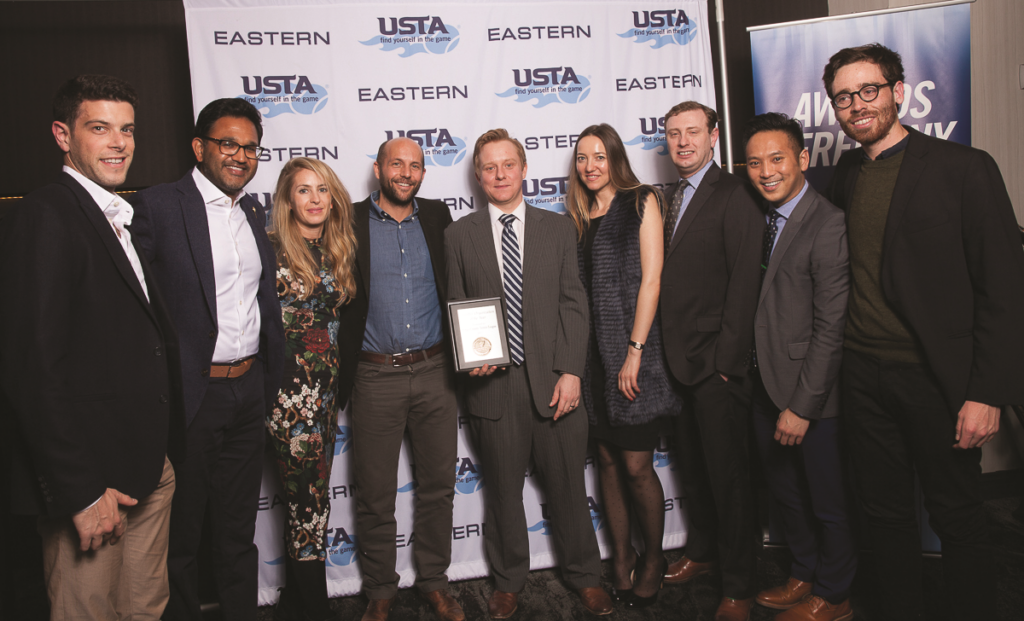Bringing Tennis to the Kids: Kings County Tennis League

The growth of tennis in New York City has always been, and always will be, dependent on people in the community identifying a need, and deciding to do something about it.
One of the most prominent examples of this can be found in the Kings County Tennis League (KCTL), which was founded by Michael McCasland in 2010 and whose vision is to bring tennis directly to kids as a tool for youth development and community building.
When McCasland moved to the Bedford-Stuyvesant neighborhood of Brooklyn after taking a job as a DNA Forensic Scientist for the City of New York in 2010, he noticed a tennis court near his apartment and adjacent to the Marcy Houses Housing Development was in terrible shape.
“I thought that having a tennis court in such proximity to a New York City Housing Authority housing development was an opportunity to bring tennis—a sport typically thought of as the preserve of the middle and upper classes—to underserved kids,” said McCasland. “Having tennis courts situated in parks all across the city, sometimes unnoticed—in wealthy neighborhoods as well as working class and modest communities inspires me to bring the style of programming I grew up on others.”
With that idea in mind, McCasland began to take matters into his own hands and started posting handwritten flyers around the neighborhood and trying to assemble a group of local kids who would be interested in free tennis instruction on Saturdays.

“During our first class, no one showed up,” said McCasland. “It wasn’t until we started handing out flyers and talking to community leaders and parents that attendance started to pick up. We started with no children on day one, but ended that first season with more than 25 kids. Once people realized what we were doing and we built up a reputation, the commitment began to build. I think that the biggest barrier for tennis is that it takes some individualized instruction and patience to gain proficiency, and thus become fun. Once the parents and children realized they could learn tennis on their doorstep for free and with few barriers, they discovered tennis to be a very rewarding and enjoyable sport.”
As word got out about the program, young professionals from the area began coming forward to volunteer, and little by little, the program grew. To date, KCTL now has over 120 active volunteers in the organization.
“We have an amazing group of volunteers,” said McCasland. “We do all we can to engage and celebrate our volunteers and provide a social aspect offering chances to meet and mingle, play in tennis tournaments and compete on the KCTL Vols tennis team. One new initiative will enable volunteers to expand their knowledge and networks in their own work industries as we plan to offer seminars and guest speakers to further enhance their experience with us.”
One of those volunteers is David Webley, who began volunteering with KCTL in 2016, and knew immediately it was something he wanted to continue to be a part of.
“I was so impressed with the vision and the mission,” said Webley. “I have been extremely fortunate to have a lot of opportunities in life and most have stemmed through tennis. I saw a chance to be involved in something that would create such opportunities for children with fewer opportunities to play and learn the sport.”
That vision has helped KCTL grow at an incredible rate over the last eight years. What was once just one program at the court near the Marcy Houses has expanded to five public housing developments located in central Brooklyn, with programming being added to: Tomkins House, Lafayette Gardens, Summer House and the Brevoort Houses. At a few of the locations, the organization either renovated the courts or created them completely from scratch. Each location serves as its own “tennis club,” with all five of them together forming the Kings County Tennis League.
What began as a seasonal program has now become a year-round one, offering after school programs at Marcy Houses in the fall and at the Pratt Institute in the winter, serving over 150 children.
As a result of their dedication and commitment to growing the game, and using tennis as a tool for underprivileged children to grow, KCTL was named the USTA Eastern 2017 Member Organization of the Year at the annual USTA Eastern Conference in January.

“As a supporter of many tennis and learning programs, the KCTL story is one of our section’s favorites,” said Jenny Schnitzer, USTA Eastern’s Executive Director and Chief Operations Officer. “We are beyond proud of what Michael McCasland started and the continued work of KCTL’s staff and volunteers in making tennis more accessible to children who may not otherwise had an opportunity to play our sport.”
The work done by the KCTL has had a remarkable impact on the community in which it operates, and it is not done yet. Just this past year, KCTL introduced a Go Girls Go Program to encourage female participation, and an Upswing Program for the more committed students. Those two initiatives are the first phase in launching a KCTL Academy, which is set to be launched in 2019.






